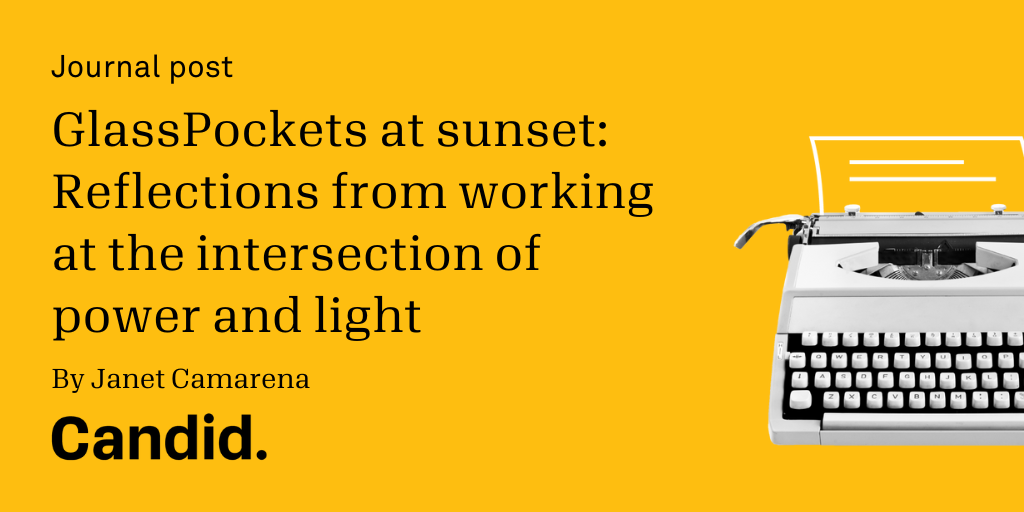Can We Expect Transparency from Grantmaking Foundations?
(Kandyce Fernandez is an assistant professor of public administration in the College of Public Policy at The University of Texas at San Antonio, and Mark Hager is associate professor of philanthropic studies in the School of Community Resources and Development at Arizona State University.)
The proposition that grantmaking foundations should be more transparent carries with it the underlying assumption that grantmaking foundations are not as transparent as we might like them to be. In a recent paper published in Public Administration Quarterly, we argue that many of us do not expect transparency from foundations since we think of them as private institutions, like a private company. We also argue that our transparency expectations and the behavior of foundations themselves might change if this prevailing presumption of private-ness were to change.
The Dominant View of Foundations
So, are grantmaking foundations private or public? This is a complicated question, and it’s the one we spend most of the paper discussing. An important point is that there’s a dominant, prevailing, what we call a ‘hegemonic’ view that since grantmaking foundations are not agents of government (and therefore ‘public agencies’), they are private and therefore can act in a way that that is shielded from public scrutiny and participation. This holds for both independent and corporate foundations, and even community foundations are not expected to act in a fully public way.
As a consequence, the general public has little expectation for any level of engagement with foundations in their community. Grantees are grudgingly content with a one-way flow of information and strategic decision-making about how philanthropic resources are distributed in communities. The media asks few questions about what role foundations might play in regional development. And, perhaps most importantly, foundations themselves use the hegemonic view of privacy to justify closing themselves off from the communities where they reside.
What would change if we all understood foundations to be public rather than private institutions? Turns out that there’s ample reason to think of them as public.
Competing Perspectives: A Political, Economic, and Social Context
For example, consider what we call the political context of grantmaking foundations. The political context distinguishes between efforts that serve the collective interest rather than the interests of individual or narrower groups in society. To the extent that grantmaking foundations assert multiple perspectives of the public interest, or provide resources to other nonprofits that do so, they serve in a largely public role as they utilize private resources for various public benefits. Their public role is further underlined when grantmaking foundations address those things government may not be able to do and where market actors choose not to engage. In these cases, foundations reflect a public role as they focus on other groups, interests, and issues.
An economic context also gives some credence to the view that foundations are public actors. The economic context considers whether benefits are distributed to the broader citizenry or to a narrower, specific group with special interests. While governmental benefits are said to serve the median interests within society, grantmaking foundations serve groups outside the median. In fact, this is one source of frequent praise: foundations can serve narrower, contested, or controversial groups, whereas government may lack the inclination to do so. Whereas independent foundations might tend to focus attention on narrower causes identified by a single donor, community foundations are increasingly more public because they are established to purposely seek out diverse donors and diverse causes.
Thirdly, we argue that social context provides a basis for viewing foundations as public actors. This context focuses on whether or not the work has consequences beyond those involved. Where decisions and activities will or are intended to impact a specific policy or issues, the work is said to be instrumental. On the other hand, where decisions and activities are meant to be supportive rather than impacting change, the work is considered expressive. To the extent that foundation activities strive for greater, longer-lasting instrumental impact on an issue or cause, we argue that they are more public than those that address issues with more immediate, short-term objectives. In other words, With the right marketing, the public, grantees, media, and foundations themselves might be led to recognize a greater degree of public-ness among grantmaking foundations.
Private Institutions with Public Expectations
Political, economic, and social contexts provide independent reasons why we might consider grantmaking foundations to be public institutions rather than private, challenging the dominant view. The nature of their accountability, the type of work, the extent of their reach, and their interest in impacting change or supporting issues renders them more public than private in some cases, and at minimum quasi-public institutions with a substantive public role. With the right marketing, the public, grantees, media, and foundations themselves might be led to recognize a greater degree of public-ness among grantmaking foundations.
The consequence, we believe, would be that people both inside and outside foundations would act differently. The public and grantees would see foundations as partners rather than private edifaces. The media would both expect and receive the kind of transparency from foundations that they need to make sense of the role that foundations play and the value they bring to communities. And, most tellingly, foundations would embrace a more open, participatory, and engaged role in social change efforts.
-- Kandyce Fernandez and Mark Hager



